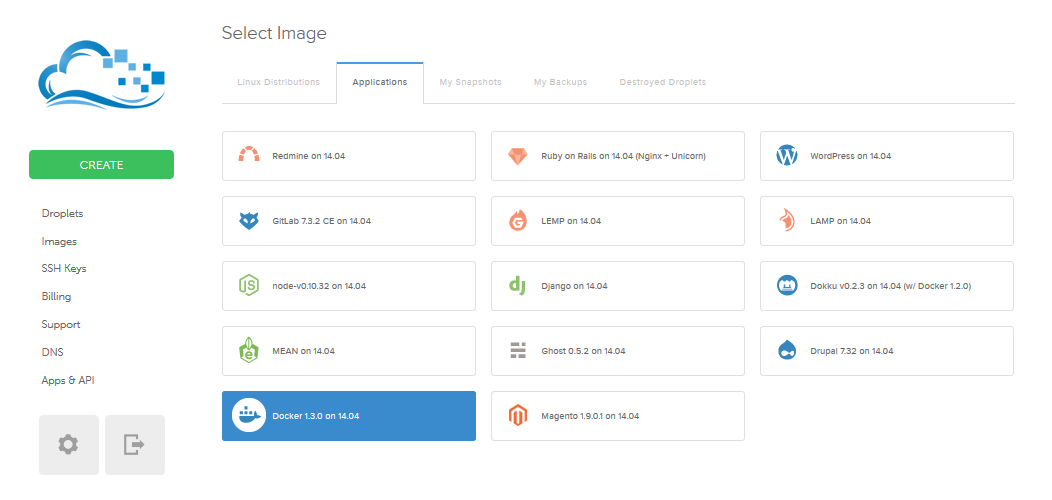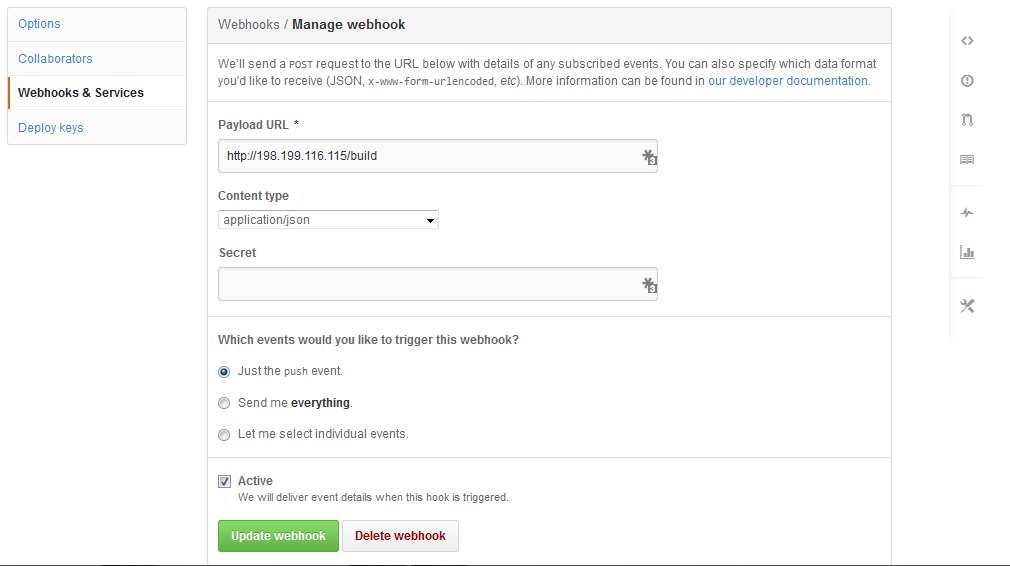tarzan
Self-hosted Automated Docker Builds that Run Rather Fast
Automated Builds are one of the best features of the Docker Hub. They allow you to automatically re-create your Docker images on source control push, and they allow other people to find the Dockerfile used to create your image to inspect and play around with before pulling, running, or modifying it.
However, there is a big problem incorporating Automated Builds in a real-life workflow in their current form.
- Because Docker’s build robot runs Automated Builds using the
--no-cacheoption (the infrastructure costs of not doing so would be prohibitive), all of the image layers are created from scratch each time. - This ends up in an Automated Build process which could take ten minutes or more (for an operation which would take seconds locally) and does not use the Docker build cache (one of the best, most oft-cited features of
docker build) at all. - Because the layers are completely new, Docker’s build robot pushes all new layers when it pushes the built image back to Docker Hub, slowing the Automated Build down even more (the familiar
"image layer already exists, skipping"message is nowhere to be found). - When end users go to
docker pullthe image built using an Automated Build, they always get new layers even if they have pulled that same image before. This means that even if you only changed one character in one line of source code, you will most likely have to pull down anywhere from 80 megabytes to a gigabyte or more of Docker image layers. This makes Automated Builds look very unattractive for real production deployments.
Therefore, it would be highly preferable to have an automated build robot which runs builds using the Docker cache.
tarzan is a naive implementation of such an automated build robot, written in Go. I say it is “naive” because it doesn’t attempt to do anything particularly clever (largely it shells out to docker commands) and is inherently meant to run on a single host (though this may change in the future). However, it could still be turn out to be a useful tool for automating Docker image re-builds and deploys.
Installation
You can install tarzan using either:
go get github.com/nathanleclaire/tarzan
Or install the (64bit Linux) binary directly using something like:
curl https://github.com/nathanleclaire/tarzan/releases/download/v0.0.1/tarzan | sudo tee /usr/local/bin/tarzan 2>&1>/dev/null; chmod +x /usr/local/bin/tarzan
Make sure you have docker and git binaries installed as well. On Debian based systems, the following should work:
sudo apt-get install -y git-core
curl get.docker.com | sudo sh
As mentioned in the next section, tarzan is also available to run in a Docker container.
Getting Started
First you should get a virtual private server of the appropriate size (a small server at, say, Digital Ocean will probably do nicely to start - they have a built-in Docker image as well).

Alternatively, if you just want to try tarzan out the “fast and dirty” way, you could use a proxy tunneling service such as the excellent ngrok and run it locally on your computer.
Install tarzan on the worker box and start it. Make sure that the port you’re exposing on is accessible to the outside world. 80 will do fine if you plan on using this box only for tarzan.
tarzan -p 80
[negroni] listening on :80
Tarzan is also available to run as a Docker container (built, of course, using tarzan):
docker run -d -p 80:3000 \
-v /var/run/docker.sock:/var/run/docker.sock \
-v $HOME/.dockercfg:/root/.dockercfg \
-v $(which docker):/usr/bin/docker \
nathanleclaire/tarzan
On Github, click on “Settings” (the bottom-most element) in the right hand panel, then click on “Webhooks & Services”.

Click the “Add webhook” button, verify your identity, and paste the IP address of your tarzan server at the /build endpoint in the URL box. If you like, you can also choose a secret (to prevent spamming of your webhook endpoint) and pass it to tarzan with the --secret option:
tarzan --secret mySecret -p 80
Or (tarzan is set as a ENTRYPOINT in the Docker image):
docker run -d -p 80:3000 \
-v /var/run/docker.sock:/var/run/docker.sock \
-v $HOME/.dockercfg:/root/.dockercfg \
-v $(which docker):/usr/bin/docker \
nathanleclaire/tarzan \
--secret mySecret
Now when you push code to the master branch, your image will automatically be rebuilt and pushed to Docker Hub. By default, tarzan assumes that you have the same Docker Hub username as your Github username, but you can specify a different one using --hub-name:
tarzan --hub-name myalias -p 80
Tarzan runs using the build cache, so this process is relatively speedy and will work with as many images/repos as your disk has space for.
Naturally, the beefier that your server is, the faster the builds will run, and the fatter that your pipes are, the faster images will get moved to and fro (Git|Docker) Hub.
As noted in the FAQ, you can also use fig to bootstrap your own version of the registry running alongside tarzan (using the --alt-registry option) in case you want to use that instead of Docker Hub to push and pull images from.
Working on tarzan
If you want to hack on tarzan simply:
- Make sure you have
dockerinstalled on your system (only Linux supported for now) - Run
makein the project’s root
tarzan will compile with all needed dependencies (they are vendored) inside of a container and spit out a binary to the host.
FAQ
Q: Is this compatible with Docker Hub’s automated builds?
Yes and no. Docker Hub does not allow users to push to automated builds manually (using docker push), so it is impossible to use a official Automated Build Docker Hub repository as a backend for your tarzan build. However, nothing is stopping you from creating two Docker Hub repositories (and two separate webhooks on Github) and using one as a normal automated build (allowing for Dockerfile discovery) and one as a tarzan build (allowing for fast build and pull).
Q: Can I run this using my own registry instead of using Docker Hub as a backend?
Yes. Provided in this repository is a fig.yml file which will allow you to run fig up in the project’s directory and bootstrap an instance of tarzan running alongside a local instance of the Docker open-source registry as a backend. That way, you can also push and pull images from the same host where you are running tarzan using the Docker image.location.com/imagename format.
Q: What do I do if my system’s Docker binary is called docker.io instead of docker?
Simply use the --docker-binary-name flag:
tarzan --docker-binary-name docker.io -p 80
Q: Will this work with Docker Hub private repositories?
Yep! As long as the user you’ve authenticated as can push to the corresponding private Docker Hub repositories, tarzan will be able to push to them. The same caveats about true Automated Builds still apply of course.
Q: Is there a shiny GUI or web interface so I can see the status of my builds?
For now, STDOUT/STDERR logging is what tarzan offers. Eventually I want to expand it to have a (mostly pretty minimalistic, but useful) web interface.
Q: Can I build docker/docker with it and do all kinds of weird stuff that Docker Hub won’t let me do?
Yuuuuuuup! It’s your own server, do whatever you want.
Q: Why is the project called tarzan?
Partially because it is meant to be a wild and feral tool, refusing to be tamed by the confines of civilazation, but there is also a secret meaning and I will buy you a beer, coffee, cookie etc. if you figure it out.